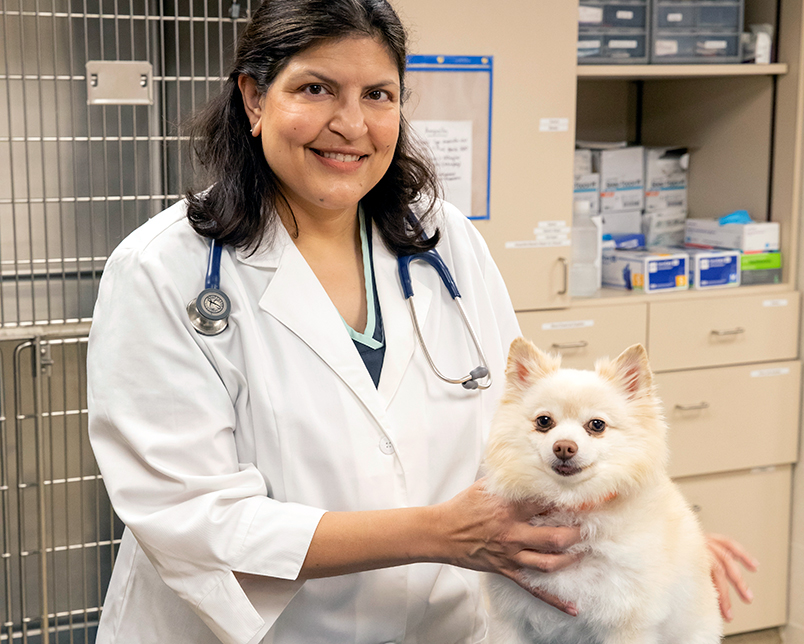Dr. Rao is part of the dentistry service.
Tell us about your background.
I was born in Pittsburgh, Pa., and grew up in the Washington, D.C., suburbs. After graduating from the Virginia-Maryland College of Veterinary Medicine in Blacksburg, Va., I returned to Maryland to work in small animal general practice.
After 10 years in practice, I purchased a clinic and I managed it for 12 years. I enjoyed practicing, but I wanted to expand my skill set in administration and teaching.
While I was hospital director at Tufts Vets, a specialty hospital in Boston, I enjoyed teaching veterinary students. I decided that I wanted to make teaching my full-time career so I could impart my knowledge to soon-to-be veterinarians.
I worked as a clinical assistant professor in the primary care service at Purdue University’s Veterinary Teaching Hospital for 3 years before joining the Illinois faculty.
How did you become interested in dentistry?
At Purdue I was charged with growing the dentistry practice and developing the dentistry teaching program. I also taught tooth extraction surgeries to third- and fourth-year veterinary students and performed oral surgery. I developed a passion for dentistry and oral surgery.
What are your special interests?
My current interest is treating periodontal disease, but I also find it rewarding to treat cats with chronic gingivostomatitis. It is very satisfying to cure animals just by removing the source of their oral pain.
They immediately feel better and their owners are happy too.
Also, it is very rewarding to teach veterinary students in the clinics and in the classroom. I love to see their eyes light up when they have an “aha” moment. Currently, I am researching the causal relationship between periodontal disease and heart disease and the role periodontal disease plays in systemic disease.
Tell us about one of your favorite cases.
I just started my career at University of Illinois so I have yet to pick my favorite cases. One case that stands out is a cat that had a temporomandibular joint (TMJ) luxation. We used the modified labial button technique to stabilize the occlusion after reduction of the luxation. I am looking forward to collecting more favorite cases!




